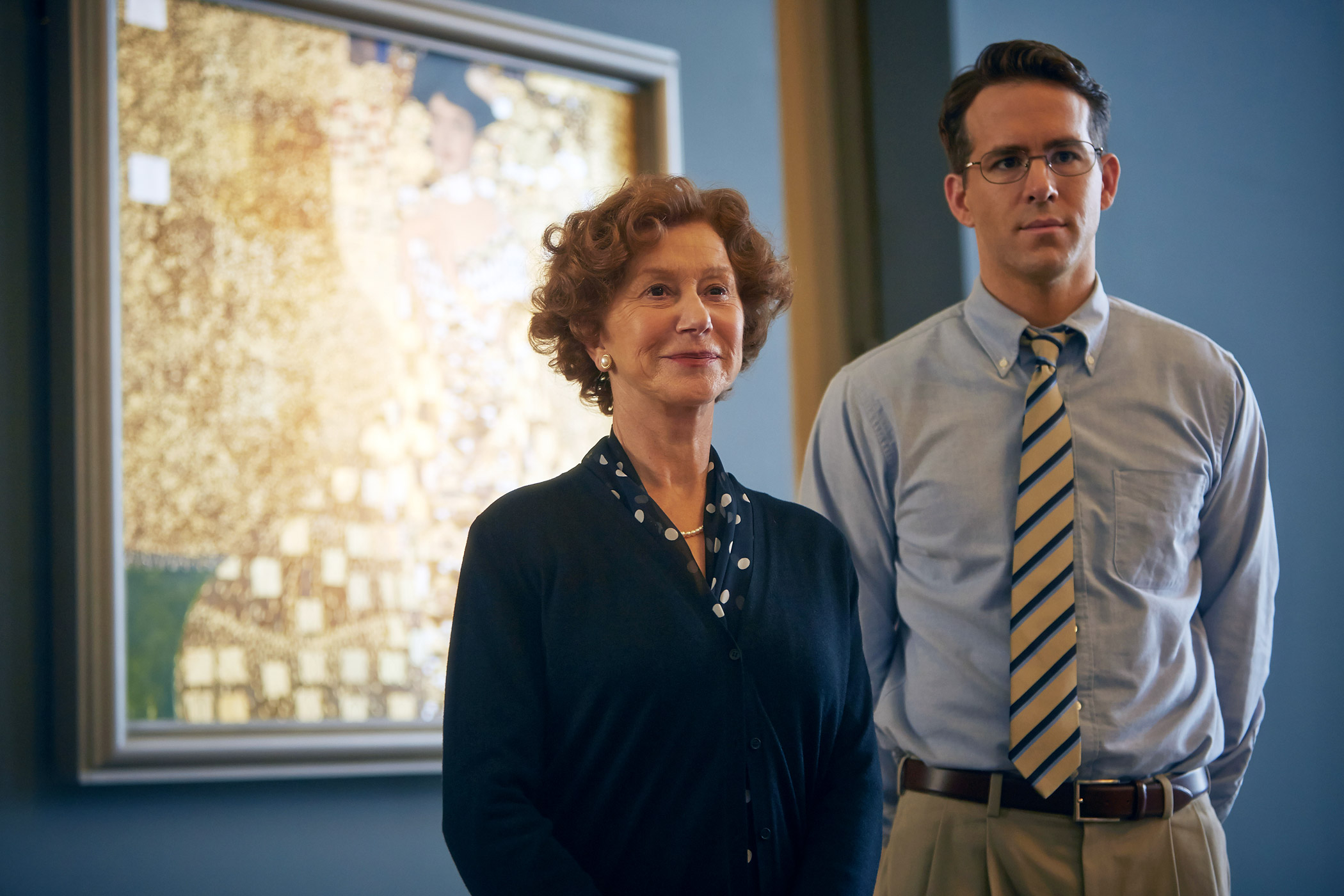
Icy and earthy, Helen Mirren is a rare regal presence in a movie age that values the plebeian over the patrician, and mass over class. Lauded with an Oscar and an Emmy for playing both Queen Elizabeths, Mirren has matched her cool aristocracy with a boldness of performance and display. She leaves the gentler, more recessive emotions to other actresses; a Mirren woman is someone you don’t mess with.
So powerful is Mirren’s screen impact that all other actors and factors shrivel in her shadow. That’s the case with Woman in Gold, a fact-based drama that would have been released late last year if anyone at the Weinstein Co. thought it had a decent shot at Oscar nominations. Directed by Simon Curtis (My Week With Marilyn) and written by Alexi Kaye Campbell, the movie would strand Mirren in its familiar mediocrity if she weren’t determined to invest her strengths in its flinty, haunted heroine.
In the late 1990s, Maria Altmann (Mirren) runs a dress shop in Los Angeles. Sixty years earlier she fled her native Austria to escape Hitler’s persecution of the Jews. Now in her 80s, and upon the death of her sister, she hopes to wrest some of her family’s treasured paintings — including Gustav Klimt’s 1907 Portrait of Adele Bloch-Bauer, also known as “Woman in Gold” — from the Austrian government, which holds the works and won’t relinquish them. The Austrians revere the painting as “the Mona Lisa of Austria,” but to Maria it is a picture of the beautiful aunt she loved and lost. She retains a young lawyer, Randol Schoenberg (Ryan Reynolds), in the seemingly chimerical pursuit of recovering her family trove. If they succeed, any number of other masterpieces might legally be returned to the heirs of their rightful owners.
A reviewer of Woman in Gold, or of any ripped-from-yesteryear’s-headlines biopic, has to decide how much to reveal about a historical event whose particulars — plot, background, characters and resolution — can be found in 10 seconds on Wikipedia. But the film is so clumsy in its attempts at suspense, in forcing Maria and Randy to make so many despairing speeches at their long odds, that the triumphant outcome is never in doubt. (If it were, why make the movie?) A picture like this has to find life not in its big scheme but in the tension between its characters and their times, past and present.
The past is well-enough sketched. The Bloch-Bauer home in Vienna may be a refined stereotype of good feeling, but that is how Maria remembers it from her youth: a family album etched in gold. It hardly matters whether her recollections are more fantastic than accurate. This is the world she was ripped from yet kept living in. In a lovely coda, Maria wanders through the old apartment, mingling with her parents, her sister, her aunt — being revived by communing with the dead.
It’s the one supple element in a movie whose stern judgments outrace its skill. The central message is that Austrians don’t have to be Nazis to be grasping nasties. Their imperial logic: the Third Reich stole these paintings in 1938, and we get to keep them in 1998. Statute of limitations and all. Except for a journalist (Daniel Brühl) who helps Maria and Randy in Vienna, the Austrian curators and bureaucrats have sneering demeanors and piggy faces. This arrant editorializing also swallows up a host of distinguished actors, including Jonathan Pryce and Charles Dance, who have little to do in a movie that is essentially a two-hander. Problem is, Reynolds is the second hand.
Randy Schoenberg came from impressive lineage, as the grandson of composers Arnold Schönberg and Erich Zeisl, and became a prominent crusader in recovering art appropriated by the Nazis. Yet Reynolds (who took the role when the much more plausible Andrew Garfield backed out) plays him at first as a young oaf, a high-school hunk pretending to a three-figure IQ. The one-time Green Lantern is perhaps the most Canadian actor of his generation, and not in a good way. When Randy tells his wife (Katie Holmes), “It’s Austria — something happened out there, and I don’t know why but I can’t let it go,” Reynolds misses the obsession and settles for callow bafflement.
That leaves Mirren, who might have phoned the role in but instead dials up every fiber of anxiety and resolve. In successive shots she can look 80 or a lustrous 20-something, not through makeup or CGI but through an expert employment of her craft and sorcery. Unaided by her colleagues, at times nearly sabotaged by them, Dame Helen could be giving a Master Class in acting surrounded by 6-year-olds. The Queen stands alone.
More Must-Reads From TIME
- Dua Lipa Manifested All of This
- Exclusive: Google Workers Revolt Over $1.2 Billion Contract With Israel
- Stop Looking for Your Forever Home
- The Sympathizer Counters 50 Years of Hollywood Vietnam War Narratives
- The Bliss of Seeing the Eclipse From Cleveland
- Hormonal Birth Control Doesn’t Deserve Its Bad Reputation
- The Best TV Shows to Watch on Peacock
- Want Weekly Recs on What to Watch, Read, and More? Sign Up for Worth Your Time
Contact us at letters@time.com